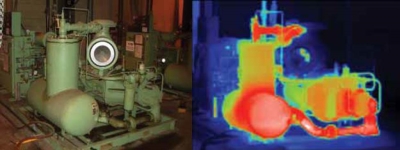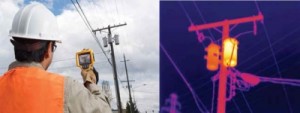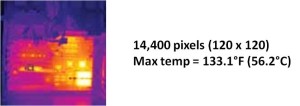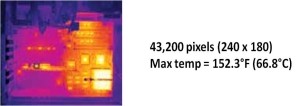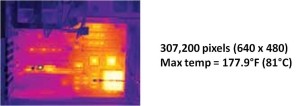When selecting a thermal imager, evaluate the temperature range that will be suitable for your applications. For industrial applications, the temperature range is the number one specification to consider. Industrial thermal imagers feature a wider temperature range to accommodate facilities that have high-temperature equipment such as boilers and steam systems.
Thermal Sensitivity
Thermal sensitivity, or Noise-Equivalent Temperature Difference (NETD), measures the smallest temperature difference that a thermal imaging camera can detect in the presence of electronic circuit noise. Cameras with a low NETD will detect smaller temperature differences and provide higher resolution images with increased accuracy.
Thermal sensitivity is measured in milliKelvins (mK). Cameras are more sensitive with values at the low end of the scale. For example, cameras with 50 mK are about 4 times as sensitive as a camera with 200 mK. The more sensitive (50 mK) cameras provide a wider temperature difference, resulting in more colors on the thermal display.





